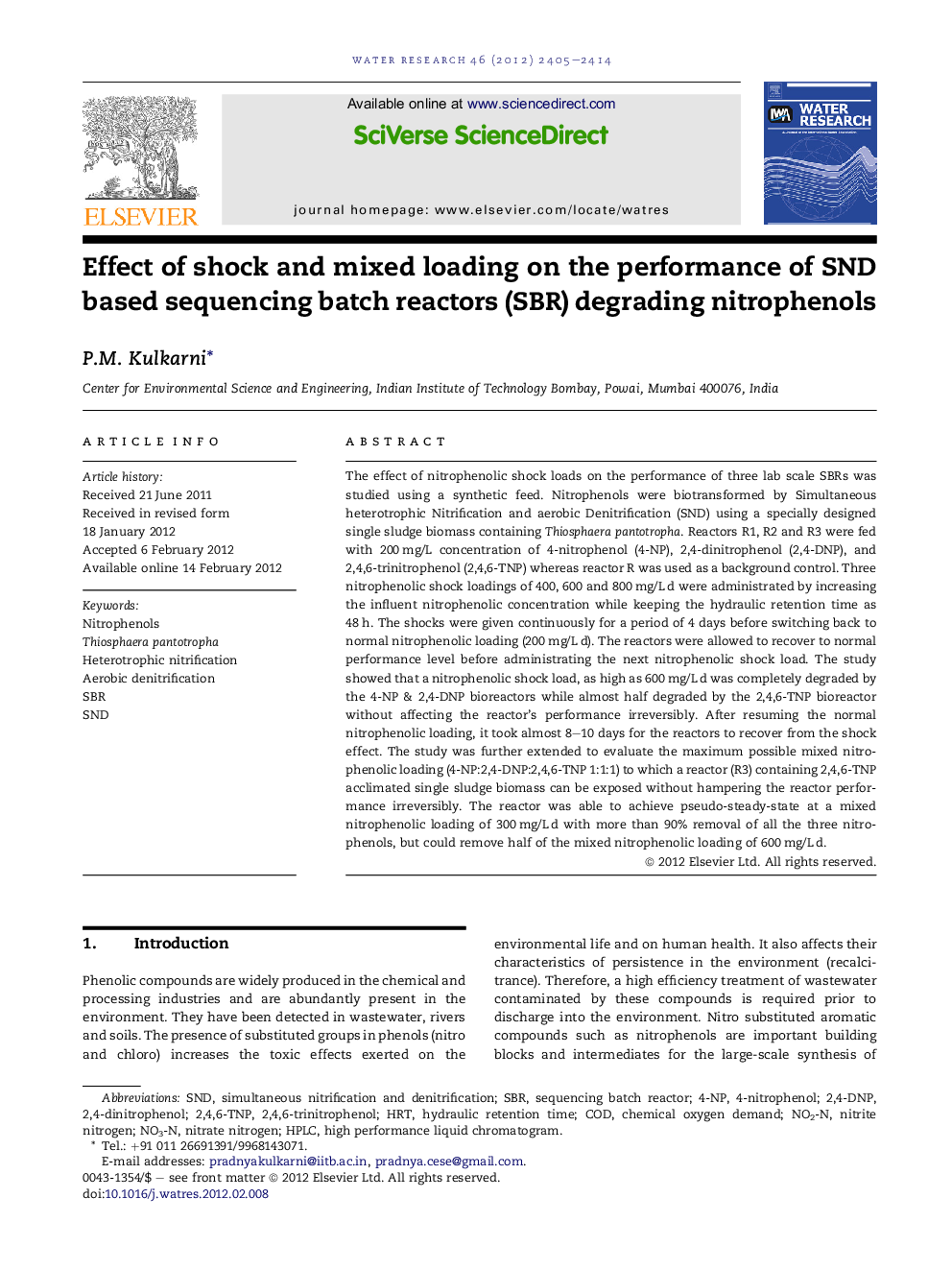| کد مقاله | کد نشریه | سال انتشار | مقاله انگلیسی | نسخه تمام متن |
|---|---|---|---|---|
| 4482943 | 1316873 | 2012 | 10 صفحه PDF | دانلود رایگان |

The effect of nitrophenolic shock loads on the performance of three lab scale SBRs was studied using a synthetic feed. Nitrophenols were biotransformed by Simultaneous heterotrophic Nitrification and aerobic Denitrification (SND) using a specially designed single sludge biomass containing Thiosphaera pantotropha. Reactors R1, R2 and R3 were fed with 200 mg/L concentration of 4-nitrophenol (4-NP), 2,4-dinitrophenol (2,4-DNP), and 2,4,6-trinitrophenol (2,4,6-TNP) whereas reactor R was used as a background control. Three nitrophenolic shock loadings of 400, 600 and 800 mg/L d were administrated by increasing the influent nitrophenolic concentration while keeping the hydraulic retention time as 48 h. The shocks were given continuously for a period of 4 days before switching back to normal nitrophenolic loading (200 mg/L d). The reactors were allowed to recover to normal performance level before administrating the next nitrophenolic shock load. The study showed that a nitrophenolic shock load, as high as 600 mg/L d was completely degraded by the 4-NP & 2,4-DNP bioreactors while almost half degraded by the 2,4,6-TNP bioreactor without affecting the reactor’s performance irreversibly. After resuming the normal nitrophenolic loading, it took almost 8–10 days for the reactors to recover from the shock effect. The study was further extended to evaluate the maximum possible mixed nitrophenolic loading (4-NP:2,4-DNP:2,4,6-TNP 1:1:1) to which a reactor (R3) containing 2,4,6-TNP acclimated single sludge biomass can be exposed without hampering the reactor performance irreversibly. The reactor was able to achieve pseudo-steady-state at a mixed nitrophenolic loading of 300 mg/L d with more than 90% removal of all the three nitrophenols, but could remove half of the mixed nitrophenolic loading of 600 mg/L d.
Figure optionsDownload high-quality image (182 K)Download as PowerPoint slideHighlights
► Nitrophenols were used as the sole source of carbon, nitrogen and energy.
► A SND based SBR containing a single sludge with Thiosphaera pantotropha was used.
► SBR could completely degrade a shock load of 600 mg/L d of 4-NP & 2,4-DNP while half degrade 2,4,6-TNP.
► The shock and mixed loading did not affect the reactors performance irreversibly.
► 2,4,6-trinitrophenol degrading SBR could half degrade a mixed load of 600 mg/L d.
Journal: Water Research - Volume 46, Issue 7, 1 May 2012, Pages 2405–2414